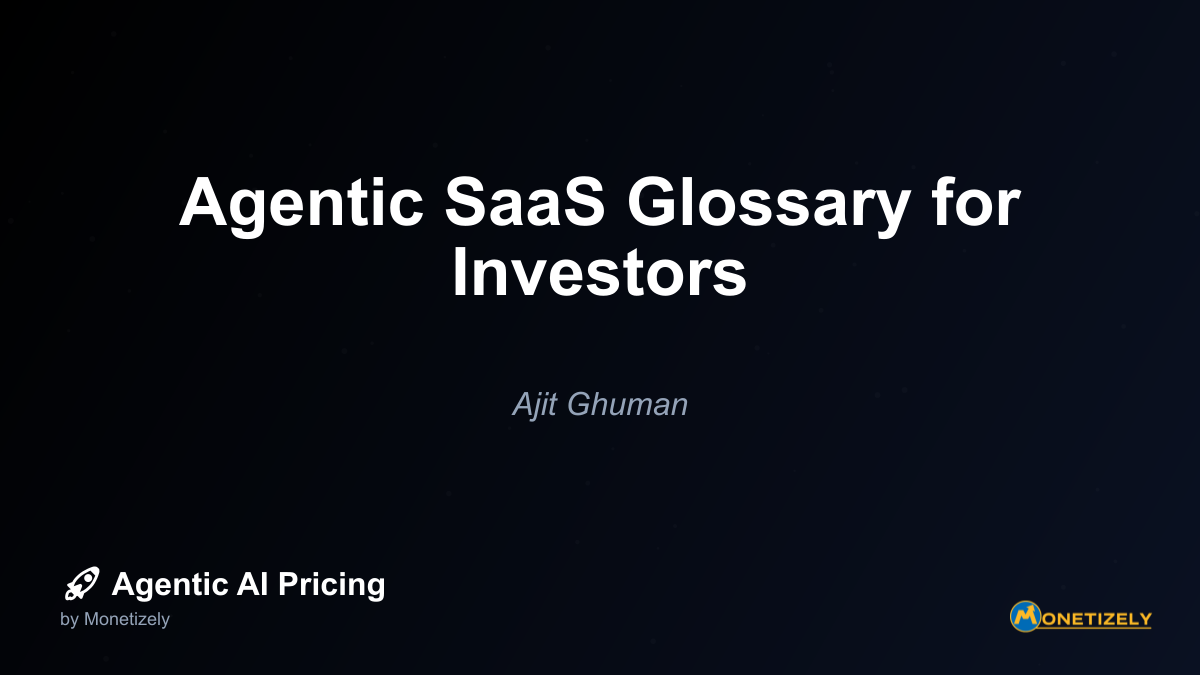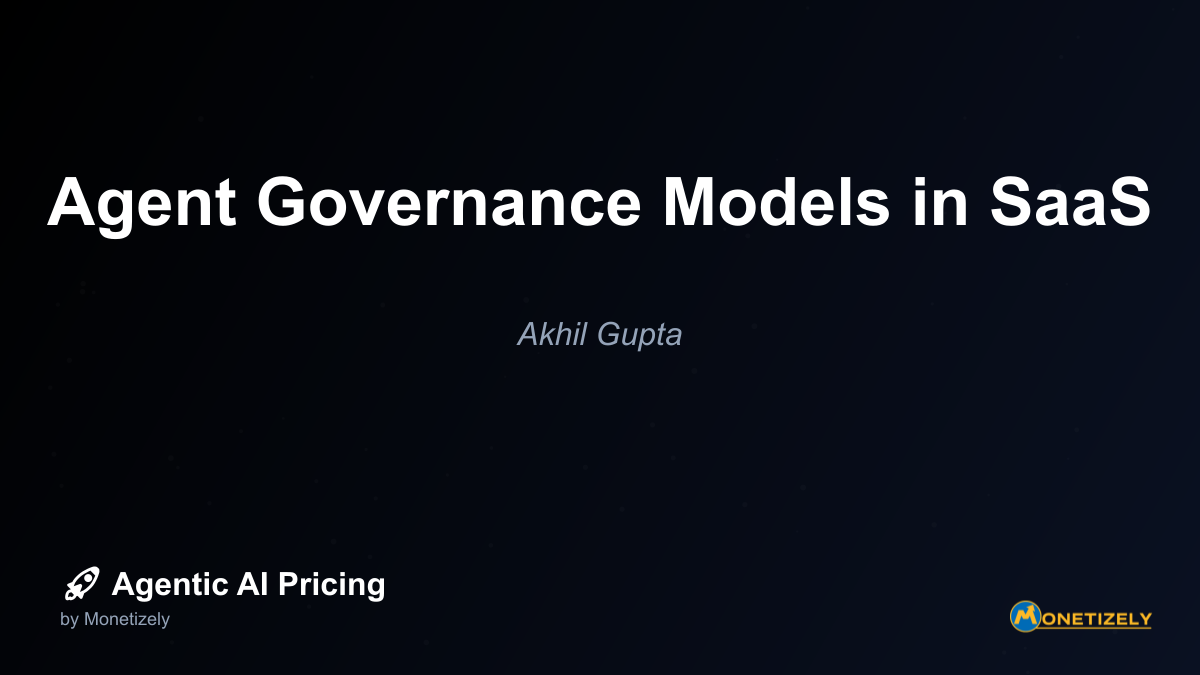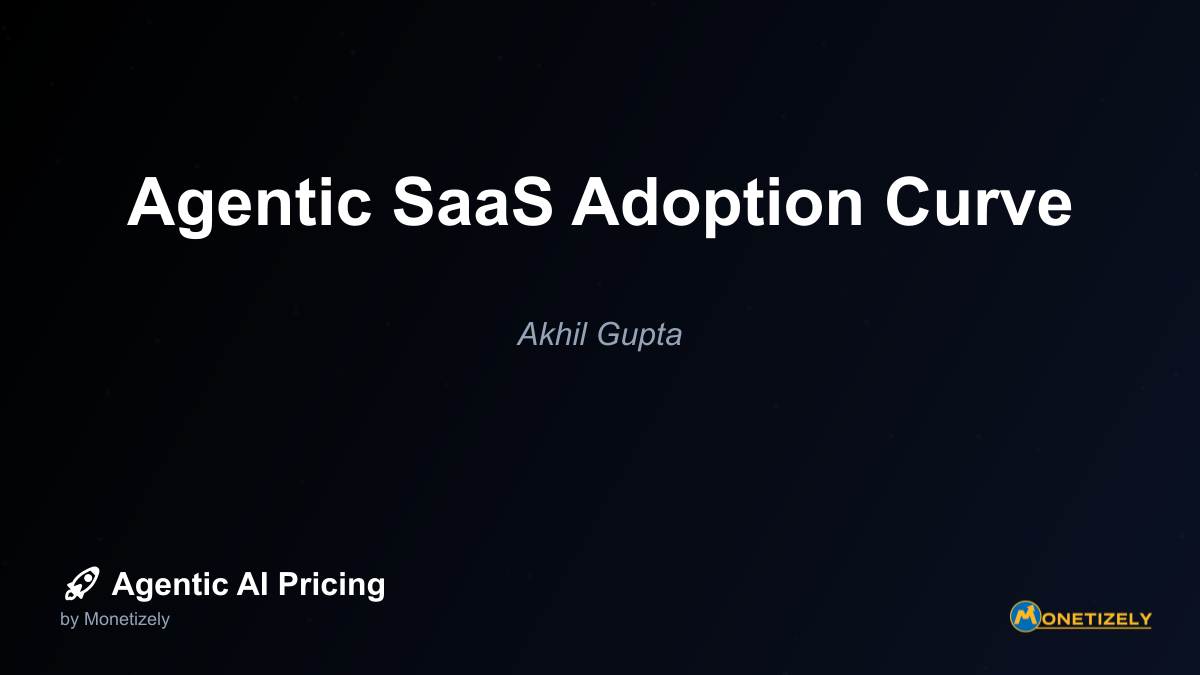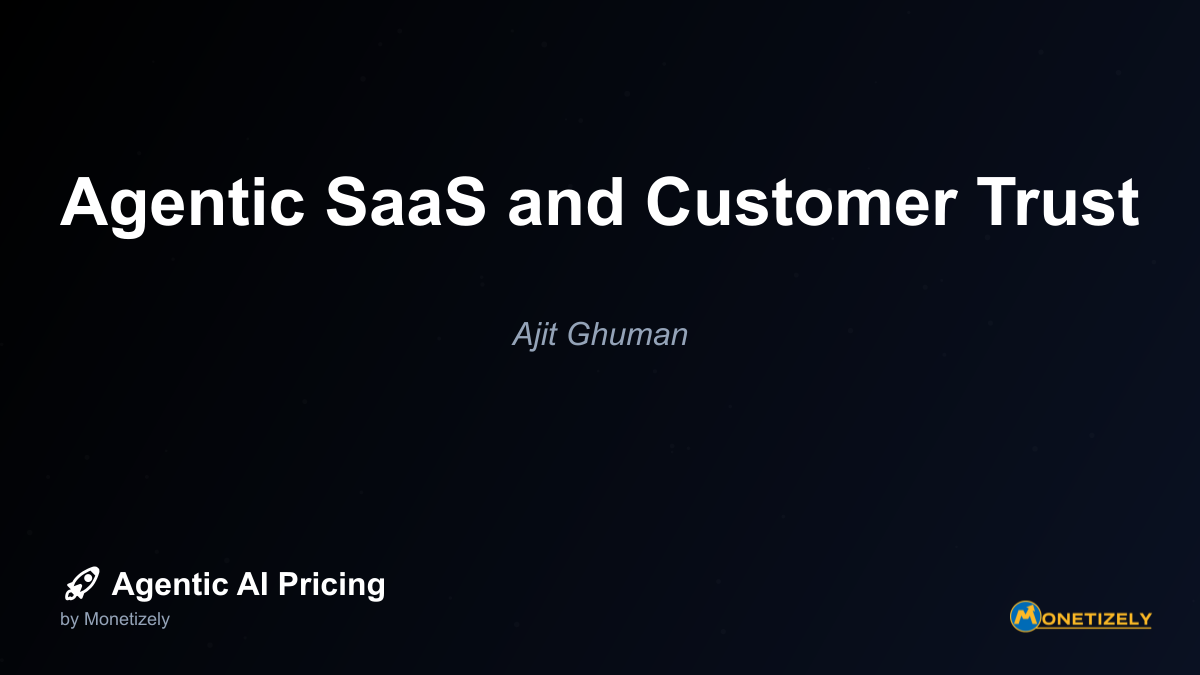· Akhil Gupta · Agentic SaaS Fundamentals · 4 min read
Agentic SaaS Glossary: 30 Must-Know Terms
AI and SaaS Pricing Masterclass
Learn the art of strategic pricing directly from industry experts. Our comprehensive course provides frameworks and methodologies for optimizing your pricing strategy in the evolving AI landscape. Earn a professional certification that can be imported directly to your LinkedIn profile.
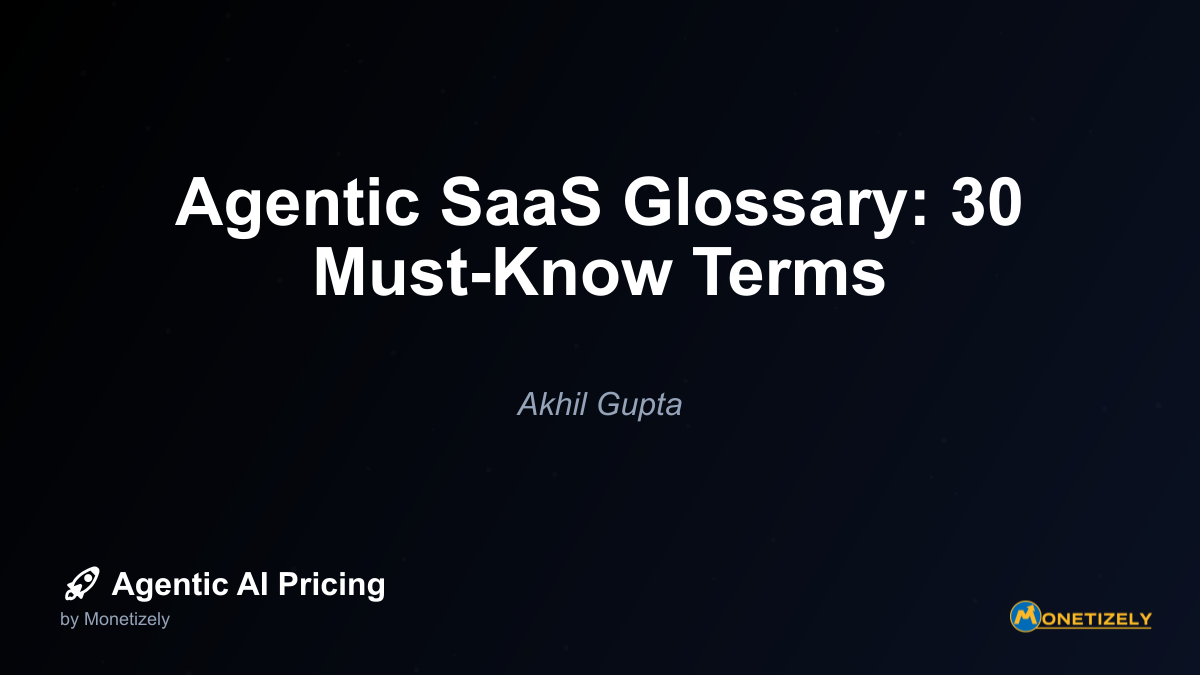
Performance & Capabilities
Hallucination
The phenomenon where an agentic system generates information that appears plausible but is factually incorrect or fabricated. Managing hallucination risk is a critical consideration in agentic SaaS deployment.
Reasoning Engine
The component responsible for logical analysis, inference, and problem-solving within an agentic system, enabling it to work through complex scenarios with coherent thinking patterns.
Prompt Engineering
The practice of designing optimal instructions for agentic systems to elicit desired behaviors or outputs. In SaaS contexts, this may be exposed to users or handled internally by the system.
Chain-of-Thought
A technique enabling agentic systems to break down complex reasoning into explicit intermediate steps, improving transparency and enabling more sophisticated problem-solving capabilities.
Embodied Intelligence
The integration of agentic AI with physical systems (robots, IoT devices) to interact with the real world, expanding capabilities beyond digital environments.
Risk & Governance
Alignment
The degree to which an agentic system’s actions and objectives correspond with human intentions, values, and expectations. Proper alignment is crucial for responsible deployment.
Containment
Security measures implemented to restrict an agentic system’s capabilities, access, or actions to prevent unintended consequences or misuse.
Explainability
The ability of an agentic system to provide clear, understandable explanations for its decisions and actions, critical for building trust and meeting regulatory requirements.
Oversight Mechanisms
Tools, protocols, and systems designed to monitor agentic behavior, detect anomalies, and enable human intervention when necessary.
Regulatory Compliance Framework
The collection of policies, procedures, and technical safeguards ensuring agentic SaaS applications meet industry-specific and general AI regulations.
Market & Adoption
Value Chain Disruption
The reorganization of traditional industry processes and roles as agentic systems take over or augment specific functions, creating new business opportunities and challenges.
Adoption Curve
The pattern of market uptake for agentic technologies, typically following a progression from innovative early adopters through to mainstream acceptance as the technology matures.
Human-AI Collaboration Model
The framework defining how human workers and agentic systems interact, share responsibilities, and complement each other’s capabilities within an organization.
ROI Calculation Framework
Methodologies for measuring the financial return on investment in agentic SaaS, accounting for both direct cost savings and broader organizational value creation.
Capability Expansion Path
The strategic roadmap for incrementally increasing an agentic system’s abilities, autonomy, and application areas over time, often aligned with pricing tiers or upgrade paths.
Putting It All Together: The Agentic SaaS Ecosystem
Understanding these 30 key terms provides a foundation for navigating the agentic SaaS landscape, but the real power comes from seeing how they interconnect. In practice, business decisions around agentic SaaS implementation require balancing technical capabilities, pricing considerations, governance requirements, and market readiness.
For example, a company might start with a low-autonomy agent using a consumption-based pricing model to minimize risk while proving value. As trust builds and the system demonstrates ROI, they might progress to higher autonomy tiers with outcome-based pricing, eventually expanding the agent’s capabilities through tool integration and more sophisticated planning modules.
Similarly, as regulatory frameworks evolve, companies must adapt their oversight mechanisms and explainability approaches to maintain compliance while continuing to deliver value. This dynamic interplay between technical possibility, business value, and responsible governance defines the cutting edge of agentic SaaS.
Beyond the Glossary: Practical Application
While understanding terminology is essential, applying these concepts effectively requires strategic thinking. Consider these approaches to leverage your new vocabulary in real-world scenarios:
Assessment Framework
When evaluating agentic SaaS solutions, create a scorecard that assesses products across multiple dimensions from this glossary: autonomy level, integration capabilities, pricing alignment, governance features, and expansion potential.
Strategic Planning
Use these terms to structure internal discussions about agentic AI adoption. For example, map your organization’s “adoption curve” position and identify the appropriate “human-AI collaboration model” for your current stage.
Vendor Communication
Armed with precise terminology, engage more effectively with agentic SaaS providers. Ask specific questions about their reasoning engines, memory systems, or containment strategies to evaluate offerings more thoroughly.
Risk Management
Develop a comprehensive risk framework incorporating concepts like alignment, hallucination management, and oversight mechanisms to ensure responsible deployment of agentic technologies.
Conclusion: Staying Fluent in a Rapidly Evolving Field
The agentic SaaS landscape continues to evolve at an extraordinary pace, with new capabilities, business models, and governance approaches emerging regularly. Maintaining fluency in this terminology will help you navigate conversations, evaluate opportunities, and make informed decisions as the technology matures.
This glossary serves as your foundation, but continuous learning is essential. As agentic systems become more sophisticated and widespread, expect the vocabulary to expand and evolve alongside the technology. The organizations that maintain a clear understanding of both the technical and business dimensions of agentic SaaS will be best positioned to capture its transformative potential while managing associated risks.
By mastering these terms and concepts, you’ve taken an important step toward effective leadership in the agentic AI era – where the ability to communicate precisely about complex systems becomes a competitive advantage in itself.
Co-Founder & COO
Akhil is an Engineering leader with over 16+ years of experience in building, managing and scaling web-scale, high throughput enterprise applications and teams. He has worked with and led technology teams at FabAlley, BuildSupply and Healthians. He is a graduate from Delhi College of Engineering and UC Berkeley certified CTO.
Pricing Strategy Audit
Let our experts analyze your current pricing strategy and identify opportunities for improvement. Our data-driven assessment will help you unlock untapped revenue potential and optimize your AI pricing approach.

